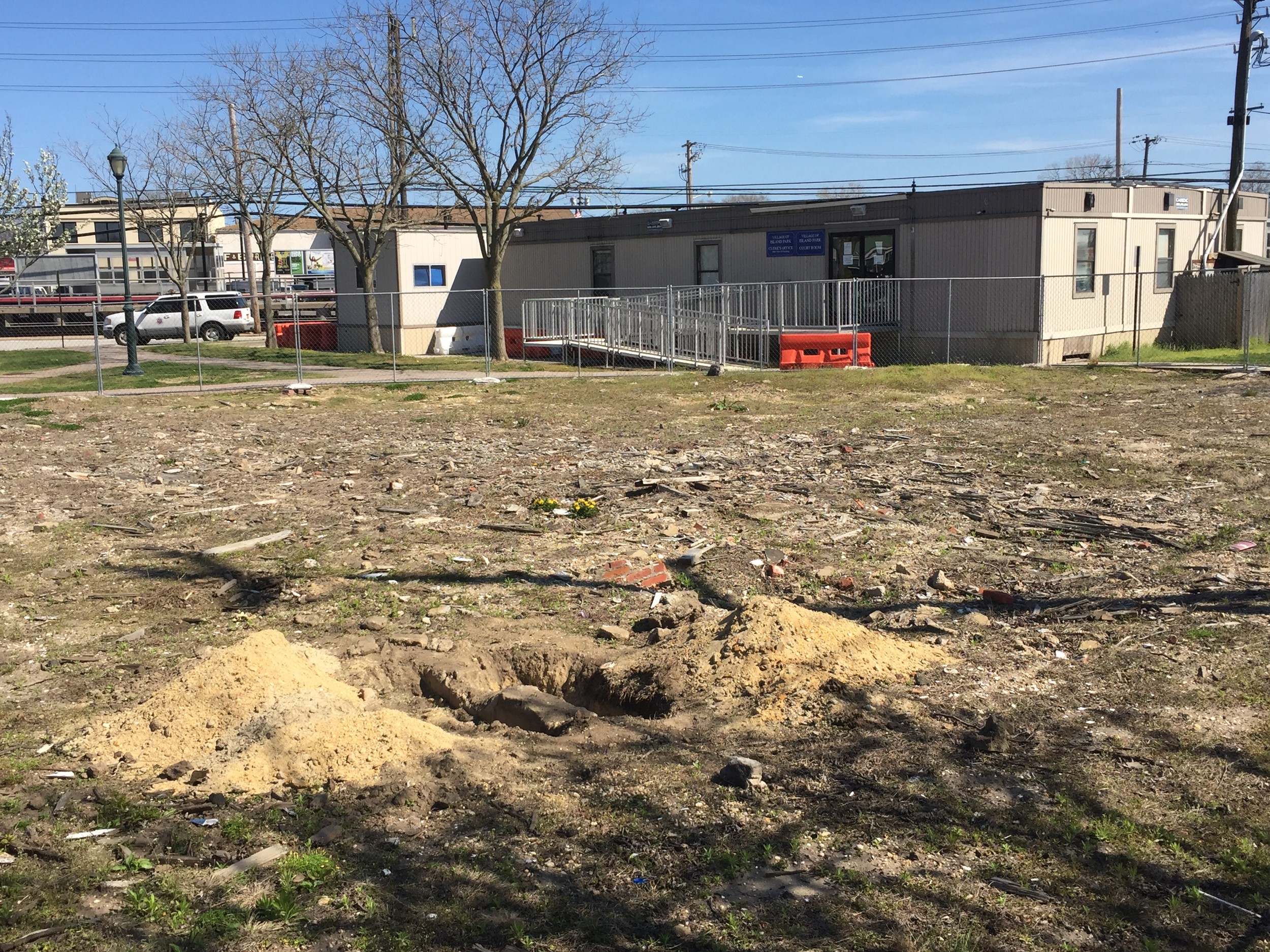I.P. explores alternate plans for Village Hall
Now considering renovating former Bank of America building
The groundbreaking for Island Park’s new Village Hall has been delayed once again as recent construction cost estimates have caused village officials to explore alternatives.
An initial estimate to rebuild Village Hall, conducted by Ehasz Giacolone Architects shortly after the headquarters was damaged during Hurricane Sandy in 2012, was slightly less than $1.5 million, according to Island Park Mayor Michael McGinty. But costs have risen, he added, as estimates in the latest rounds of bidding have reached roughly $2.2 million.
“[During] subsequent bidding, we found the numbers to be in the stratosphere,” McGinty said, adding that the village has not pinpointed the reason for the nearly 50 percent increase.
Hauppauge-based Axis Construction and Cameron Engineering, from Woodbury, were chosen for the project last year, and had completed redesigning parts of the foundation that were delaying the project, McGinty told the Herald at the end of January. He expected at that time for the contractors to break ground within a month. Currently, the village is working out of trailers adjacent to the proposed project site.
A few weeks ago, village officials met with Axis and Cameron for a pre-construction meeting, McGinty said, and were ready to build the roughly 3,000-square-foot building, which is slated to serve an administrative center, an emergency management area, a courtroom and a separate area for the village’s Building Department. But the contract could not be finalized with the $2.2 million price tag.
In Nassau County, according to New York General Municipal Law 101, commonly known as Wicks Law, multiple contractors are required when certain public works projects exceed $1.5 million, according to Village Attorney Susan Boland, who noticed the issue when reviewing the contract.
The law requires that for projects above $1.5 million, there must be different contracts for plumbing, mechanical work and electricity, she added, meaning that with a general contractor heading the project, four total contractors would most likely be needed.
The village would have to start over its bidding process, she acknowledged, to get separate contracts for those subdivisions of work.
“This whole Wicks Law shocked us,” McGinty said. “We didn’t know that the bids come in, and that changes the whole world.”
Because of the recent speed bump, the village is pursuing rough cost estimates from Walden Environmental Engineering for morphing the former Bank of America building across the street — donated to the village earlier this year — to a Village Hall.
Residents in recent months have urged officials to consider using the vacant bank building on Long Beach Road for the village’s headquarters, but McGinty had stressed in January that it would not be used as such, noting that using an existing building would not be cost-effective after calculating the costs of raising and renovating the structure.
“…At various points, the numbers just didn’t make sense,” McGinty said. “They may make sense now.”
The use of the former bank was to be determined by a transit-oriented planning study — funded by the State Dormitory Authority —which is analyzing a potential reconfiguration of Long Beach Road, McGinty said, adding that the possibility of making the building Village Hall will be discussed.
McGinty had also emphasized to residents that the village would only receive an earmarked reimbursement of $660,000 from the Federal Emergency Management Agency if it builds where the old Village Hall was. Now, the village is weighing its options, and has been in contact with U.S. Rep. Kathleen Rice’s office to see if the increased estimates of Village Hall would also increase the reimbursement.
The village is now waiting for cost estimates for two potential scenarios: raising the former Bank of America two feet above base flood elevation, or building a second story on the structure and using the ground floor as its monolithic foundation.
“The geography has changed,” McGinty said. “It’s changed in the fact that construction costs are through the roof, so under that, since we already have a building, it might be efficacious fiscally, governmentally and even in the programmatic sense.”

 50.0°,
Fair
50.0°,
Fair 




